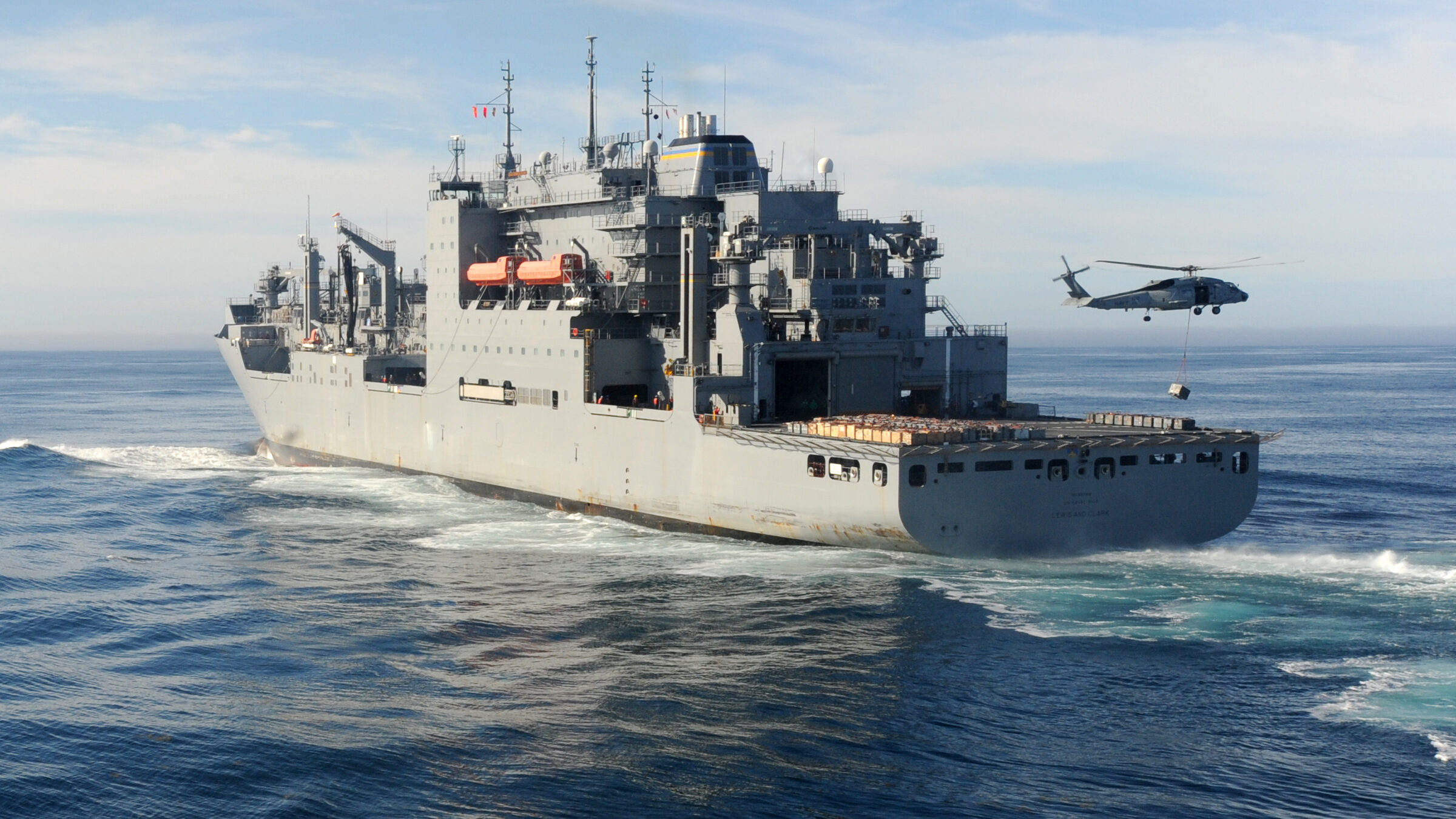
An SH-60F Sea Hawk helicopter assigned to the Dragonslayers of Helicopter Antisubmarine Squadron 11 carries ammunition from the Military Sealift Command dry cargo and ammunition ship USNS Lewis and Clark to the aircraft carrier USS Enterprise. (Photo by Stacy Laseter.)
SEA AIR SPACE 2023 — The chief of the Maritime Administration says her agency and the Navy are moving “with all best speed” to recapitalize the surge sealift fleet, warning the government cannot afford anymore “lapses” or “hesitation.”
“We’re moving forward… with all best speed to execute the vessel acquisition manager program,” MARAD Administrator Ann Phillips, who is also a retired Navy admiral, told an audience today during a panel at the Sea Air Space exposition, referring to a key effort that features industry helping the government scout out and purchase potentially useful sealift vessels. “But we can’t afford a lapse. I’ll be honest there. Any hesitation and we’re going to start to slip backwards.”
Surge sealift recapitalization refers to overhauling and replacing fleet of civilian-operated ships, known as the Ready Reserve Fleet, that in times of crisis are activated to move Army and Marine Corps ground supplies. Those ships are primarily maintained and used by the Maritime Administration, which is part of the Transportation Department, but it is working with the Navy on recapitalization efforts.
RELATED: Army to use Pacific Pathways to test assumptions about ‘contested logistics,’ prepositioned stocks
Phillips said today that MARAD had taken possession of two used sealift ships already and that three more, purchased in February, were on the way. Lawmakers in previous defense policy bills have authorized the Navy and MARAD to purchase up to two ships per year and have urged both military and civilian leaders to move quickly.
The 2018 recapitalization strategy, submitted by then Navy Secretary Richard Spencer, had three parts: buy old used ships, extend the lives of some current vessels and buy new construction vessels when feasible.
Phillips said that although MARAD and the Navy have been actively pursuing the first two parts of the strategy, the third has been effectively halted by lawmakers, who did not provide funding for new construction of ships in their fiscal 2023 budget.
Chief of Naval Operations Adm. Michael Gilday, who was speaking on the same panel as Phillips, said as the Navy continues to assess how it will fight in the future based on new concepts of operation, sealift requirements must be included in those assessments.
“The sealift we needed — the current figures that we have are grounded on analysis that was done decades ago,” he said. “That’s an obvious question to ask. The Marines are operating differently. The Army’s operating a little differently. Exactly how much sealift do you need?”








